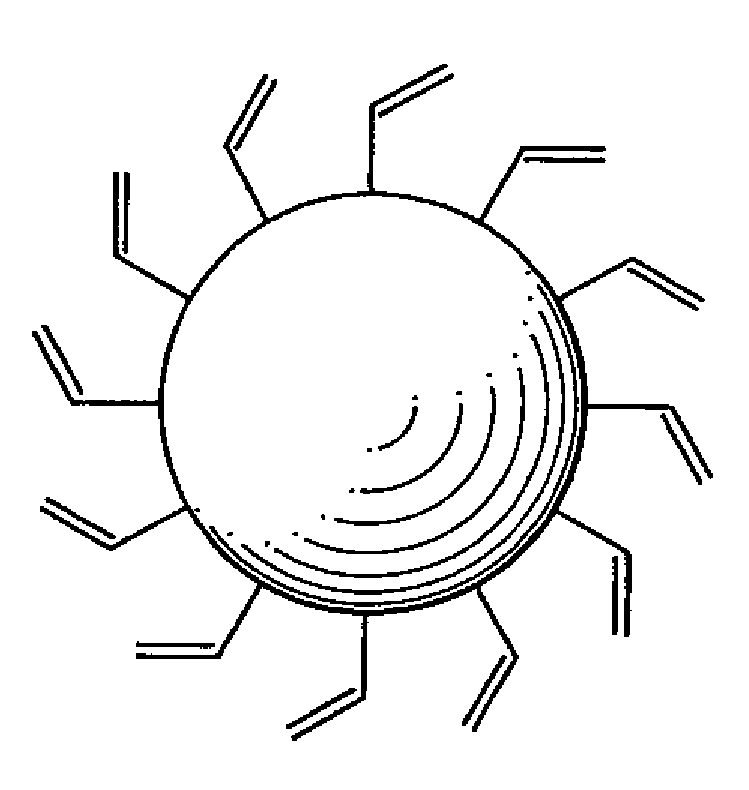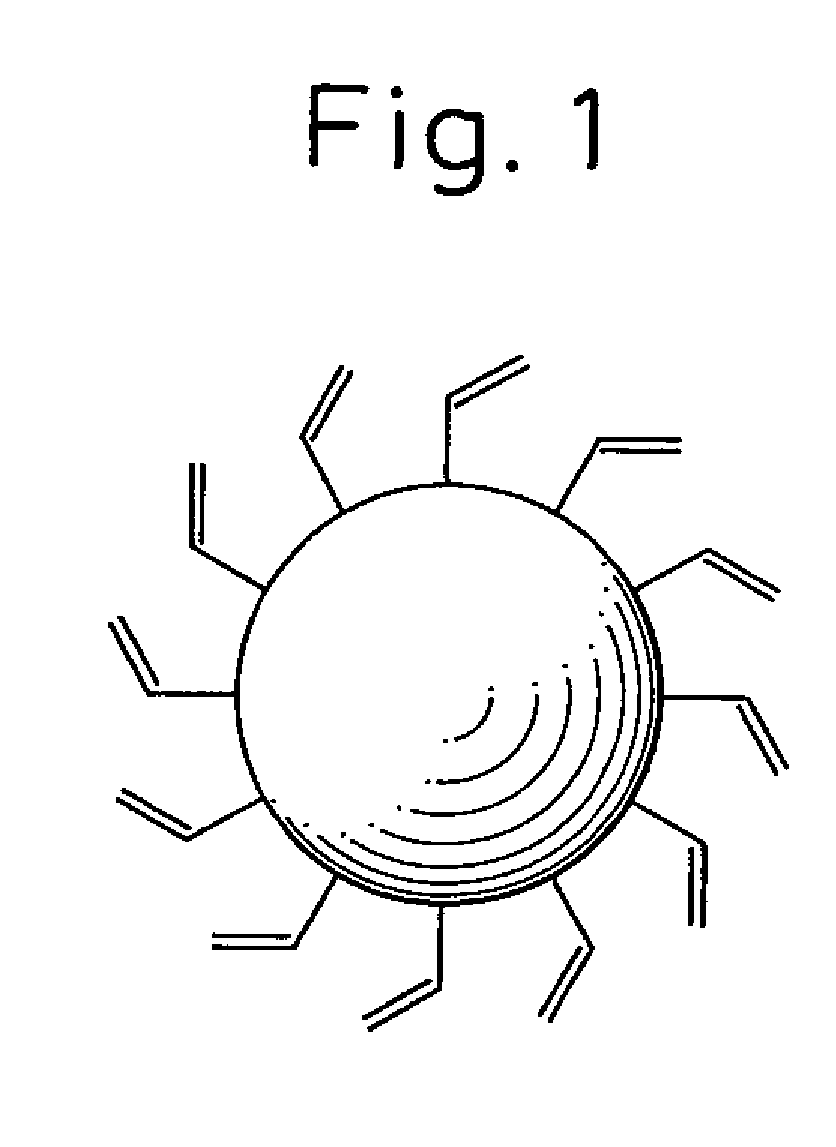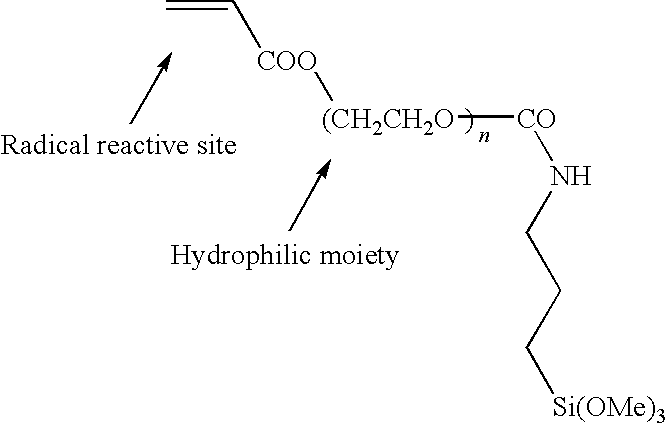Modified silica particles, and photosensitive composition and photosensitive lithographic printing plate each containing the particles
a technology of composition and lithographic printing plate, which is applied in the direction of lithography, photosensitive materials, instruments, etc., can solve the problems of deteriorating printing characteristics, difficult to sufficiently secure adhesion between the photosensitive layer, and reducing adhesion, so as to reduce the run length of the photosensitive lithographic printing plate, suppress the effect of crosslinking of a photosensitive composition containing the sam
- Summary
- Abstract
- Description
- Claims
- Application Information
AI Technical Summary
Benefits of technology
Problems solved by technology
Method used
Image
Examples
examples
[0130]The present invention will now be described in detail by way of examples, but the present invention is not limited to the scope of the following examples.
[Synthesis of Silane-Containing Monomer 1]
[0131]In a 100 ml flask, 22.27 g of polyethylene glycol monomethyl ether (Mn=550, manufactured by Aldrich Co.) was introduced. While stirring polyethylene glycol monomethyl ether using a mechanical stirrer, 10 g of 3-isocyanatepropyltriethoxysilane (A-1310, manufactured by Union Carbide Corporation) was introduced in the flask. After charging 3-isocyanatepropyltriethoxysilane, 0.5 g of dibutyltin dilaurate (manufactured by Tokyo Kasei Kogyo Co., Ltd.) was added. Since the temperature of the reaction mixture raised, the reaction mixture was cooled in a water bath. The reaction mixture was stirred overnight. After stirring, no residual isocyanate was confirmed by an IR spectrum. Then, 0.5 g of methanol was added and the contents were taken from the flask.
[Synthesis of Silane-Containing ...
examples 1 to 8
[0152]On an aluminum substrate which was roughened by a brush, anodized with sulfuric acid and then post-treated with a polyethylene glycol methyl ether methacrylate-vinylphosphoric acid copolymer, each solution containing any one of silica compounds 1 to 8 described in Table 1 was coated so as to adjust a dry weight of the coat to 1.5 g / m2. Specifically, each solution containing any one of silica compounds 1 to 8 was coated using a wire wound rod No. 26 and then dried in a conveyer oven, maintained at 100° C., for about 90 seconds.
TABLE 1Components% by weightUrethane acrylate 111.40Graft copolymer 122.88Urethane acrylate 230.70Irgacure 25040.30Infrared absorbing dye50.07Mercapt-3-triazole60.14Byk 33670.14Silica compound (30% solid content)0.95n-propanol46.66Water23.38Methyl ethyl ketone23.38to make100.00180 wt % solution in 2-butanone, obtained by reacting DESMODUR N100 (aliphatic polyisocyanate resin based on hexamethylene diisocyanate, manufactured by Bayer Co.) with hydroxyethyl...
PUM
| Property | Measurement | Unit |
|---|---|---|
| size | aaaaa | aaaaa |
| photosensitive | aaaaa | aaaaa |
| hydrophilic | aaaaa | aaaaa |
Abstract
Description
Claims
Application Information
 Login to View More
Login to View More - R&D
- Intellectual Property
- Life Sciences
- Materials
- Tech Scout
- Unparalleled Data Quality
- Higher Quality Content
- 60% Fewer Hallucinations
Browse by: Latest US Patents, China's latest patents, Technical Efficacy Thesaurus, Application Domain, Technology Topic, Popular Technical Reports.
© 2025 PatSnap. All rights reserved.Legal|Privacy policy|Modern Slavery Act Transparency Statement|Sitemap|About US| Contact US: help@patsnap.com



